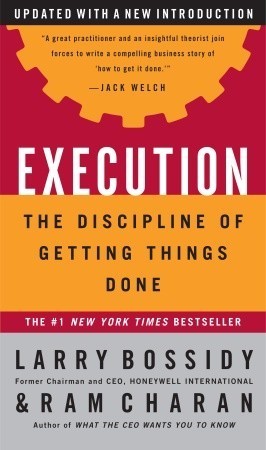More on this book
Community
Kindle Notes & Highlights
Read between
February 5 - August 22, 2017
Execution is the great unaddressed issue in the business world today. Its absence is the single biggest obstacle to success and the cause of most of the disappointments that are mistakenly attributed to other causes.
As I facilitated meetings at the CEO and division levels, I watched and studied, and I saw that leaders placed too much emphasis on what some call high-level strategy, on intellectualizing and philosophizing, and not enough on implementation. People would agree on a project or initiative, and then nothing would come of it. My own nature is to follow through, so when this happened, I’d pick up the phone, call the person in charge, and ask, “What happened?” In time I saw a pattern and realized that execution was a major issue.
Here is the fundamental problem: people think of execution as the tactical side of business, something leaders delegate while they focus on the perceived “bigger” issues. This idea is completely wrong. Execution is not just tactics—it is a discipline and a system. It has to be built into a company’s strategy, its goals, and its culture. And the leader of the organization must be deeply engaged in it. He cannot delegate its substance. Many business leaders spend vast amounts of time learning and promulgating the latest management techniques. But their failure to understand and practice
...more
Leading for execution is not rocket science. It’s very straightforward stuff. The main requirement is that you as a leader have to be deeply and passionately engaged in your organization and honest about its realities with others and yourself.
Execution is a systematic process of rigorously discussing hows and whats, questioning, tenaciously following through, and ensuring accountability.
The heart of execution lies in the three core processes: the people process, the strategy process, and the operations process.
Far from stifling people, this kind of leadership helps them expand their own capabilities for leading.
He was leading by being actively involved.
There are different kinds of intellectual challenges. Conceiving a grand idea or broad picture is usually intuitive. Shaping the broad picture into a set of executable actions is analytical, and it’s a huge intellectual, emotional, and creative challenge.
It took Albert Einstein more than a decade to develop the detailed proof explaining the theory of relativity. That was the execution—the details of proof in mathematical calculations. The theorem would not have been valid without the proof. Einstein could not have delegated this execution. It was an intellectual challenge that nobody else


